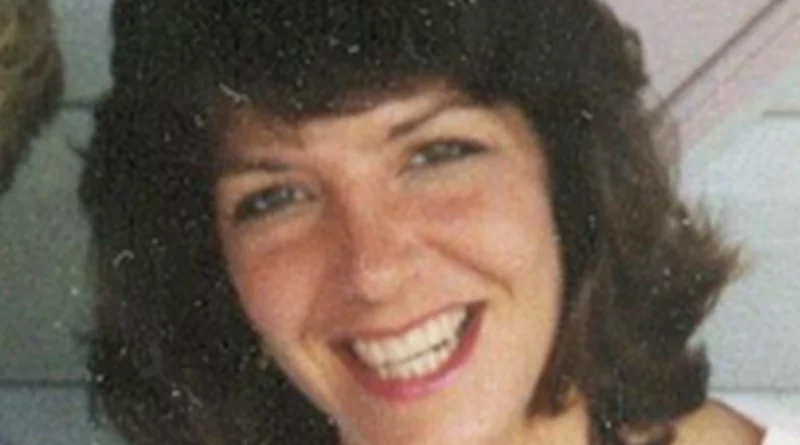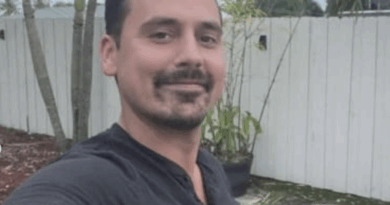Sherry Culp Murder in Springfield Virginia
On January 16, 1998, Springfield, Virginia, was shaken by a shocking crime: the murder of Sherry Ann Culp, who was eight-and-a-half months pregnant at the time. Sherry’s death marked one of the most tragic and complex cases in the area’s history, as it not only claimed her life but also that of her unborn daughter, Kelsey. Despite extensive efforts by law enforcement, family members, and the community, the case remains unsolved, leaving a lasting impact on Springfield.
Sherry was known as a caring mother of two, a devoted daughter, and an active member of her community. The brutality of her murder, coupled with the loss of an unborn child, was a heartbreaking blow to her family and friends. This case has since become symbolic of the struggle for justice in unsolved homicide cases, reminding residents of the importance of ongoing investigations and community support.
The Night of January 16, 1998
On the evening of January 16, Sherry Culp was sitting in her parked car outside her workplace in Springfield, Virginia, when tragedy struck. A hooded man approached her vehicle, shooting her twice in the head. Witnesses reported hearing the gunshots, but the attacker fled the scene quickly, leaving little in the way of immediate leads. Sherry’s lifeless body was found shortly afterward, and her unborn daughter, Kelsey, was delivered via emergency C-section, but unfortunately did not survive.
The crime was officially ruled a double homicide, as it resulted in the deaths of both Sherry and Kelsey. The brutal nature of the attack and the fact that it occurred in a public parking lot raised immediate concerns about safety in Springfield. The community, in shock and grief, demanded answers, but the investigation proved to be complex and difficult from the start. There were no clear motives, and the suspect’s identity remained elusive.
The Immediate Investigation: Challenges and Dead Ends
Fairfax County Police launched an intensive investigation, interviewing witnesses, searching for physical evidence, and attempting to reconstruct the sequence of events leading up to the murder. Sherry’s family and friends were also interviewed to uncover any potential motives or suspects.
One early suspect was Sherry’s ex-husband, Donald Culp, with whom she shared two daughters, Lauren and Heather. Police considered his possible involvement, but there was not enough evidence to pursue charges. Investigators explored other possible leads, but many ended in dead ends due to the lack of concrete forensic evidence or witness accounts that could definitively identify the killer.
Despite initial efforts, the case went cold within a few years. Forensic limitations of the late 1990s hindered the ability to analyze key pieces of evidence in a way that could lead to an arrest. Without additional witnesses or new leads, detectives struggled to make further progress.
Ken and Jane Young’s Relentless Fight for Justice
Sherry’s parents, Ken and Jane Young, were determined to keep the case alive and fought tirelessly for justice. Jane, particularly, became the driving force behind ongoing efforts, using media outreach, rewards, and public appeals to generate leads. The couple offered $50,000 of their own money as a reward for information leading to an arrest. They maintained constant contact with law enforcement and engaged with prominent news outlets, including The Washington Post, The Washington Examiner, and local TV stations, to keep Sherry’s story in the public eye.
Jane and Ken also convinced John Walsh to feature Sherry’s story on America’s Most Wanted, hoping that national exposure might generate new tips or insights. Although the episode brought increased attention to the case, it did not produce significant leads that could solve the murder. Still, the Youngs never gave up their pursuit of answers. Jane often expressed her frustration over the lack of closure, calling detectives regularly to demand updates and even resorting to punching walls in moments of intense grief and anger.
The pain of losing Sherry, combined with the unresolved nature of her case, remains a profound burden for the Young family. Jane’s words reflect her ongoing anguish: “Someone took away a beautiful girl with so much to offer. She lit up a room.” Her determination to find justice has been fueled by a mother’s love, anger, and heartbreak.
Advances in Forensic Technology
In 2010, over a decade after the murder, the case was reopened by the FBI in collaboration with Fairfax County Police. Advances in DNA technology and other forensic methods offered renewed hope for solving the case. Investigators revisited the original evidence, including items found in Sherry’s car and around the scene, to see if new techniques could yield results. Despite these efforts, no clear suspects were identified.
In January 2023, on the 25th anniversary of Sherry’s murder, the FBI announced a $10,000 reward for information leading to the arrest of her killer. This renewed effort was part of a broader strategy to leverage public involvement, hoping that someone with knowledge of the crime might finally come forward. The announcement reignited public interest, highlighting how cold cases can still hold the potential for resolution, even after many years.
Sherry’s daughters, Lauren and Heather, who were only 9 and 7 years old at the time of their mother’s murder, have since grown into adulthood. While the pain of losing their mother has never faded, they continue to hope for answers and justice for both Sherry and Kelsey.
A Community Left Waiting for Answers
The murder of Sherry Culp is a stark reminder of how violent crimes can leave lasting scars on a community. Springfield’s residents still remember the tragedy and the efforts to seek justice. The unsolved nature of the case has prompted increased awareness about safety, vigilance, and the importance of supporting cold case investigations. While the community remains hopeful for a breakthrough, the case also serves as a sobering example of how difficult it can be to achieve closure in the most tragic of circumstances.
Theories and Speculations Surrounding Sherry Culp’s Murder
The murder of Sherry Culp on January 16, 1998, remains unsolved, prompting a range of theories and speculations over the years. The circumstances surrounding her death, the lack of clear motives, and limited evidence have fueled discussions among law enforcement, crime analysts, and even the Springfield community. Here are some of the most prominent theories and speculations about who might be responsible for this tragic double homicide and why.
Personal Conflict: Did Someone Close to Sherry Commit the Murder?
One of the primary theories in Sherry’s case is that the crime was personal in nature. The calculated approach of the killer, who shot her twice at close range without any attempt at robbery, suggests a targeted attack. Such precision often indicates that the perpetrator had a personal motive or a close relationship with the victim.
From the early stages of the investigation, Sherry’s ex-husband, Donald Culp, was considered a possible suspect. The two had a contentious relationship, with unresolved issues from their past marriage. The couple shared two daughters, Lauren and Heather, and there were ongoing disputes related to custody and child support, which could have created animosity. However, while authorities interviewed Donald extensively, there was no physical evidence linking him to the murder. He was never formally charged.
One of the primary theories is that the father of Sherry’s unborn child could have been involved in her murder, either directly or indirectly. Since Sherry was eight-and-a-half months pregnant, it is presumed that she had an ongoing relationship with the father, making him a person of interest. However, due to the lack of public information regarding his identity, there has been no confirmation about his possible involvement or motive.
Still, some believe that a personal connection might have been behind the crime, considering the manner in which it was carried out. The absence of robbery, forced entry, or sexual assault further supports the theory that Sherry’s murder was driven by an individual who harbored personal animosity toward her, possibly stemming from unresolved domestic conflicts. Despite this speculation, the lack of concrete evidence has made it impossible to prove such a theory.
The Stalker Hypothesis: Was Sherry Targeted by a Stranger?
Another theory speculated upon by investigators and the public is that Sherry may have been stalked by an unknown individual leading up to her murder. This theory emerged from the fact that there were no clear suspects in Sherry’s circle, and the brutal nature of the attack seemed to suggest a level of premeditation.
The fact that Sherry was killed in a public parking lot without an attempt at robbery indicates that the perpetrator may have had knowledge of her routine and was waiting for the right moment to strike. There were reports of a hooded man seen running from the scene immediately after the shooting, which has led some to believe that Sherry was possibly stalked by someone she did not know personally.
The stalker hypothesis raises the possibility that Sherry’s killer may have been someone with a disturbing obsession or a fixation on her, one that led to an act of violence. Despite this being a viable theory, no evidence or witnesses have surfaced to support it, and the vague description of the hooded figure has done little to narrow down potential suspects.
A Professional Hit: Could It Have Been Contracted?
The calculated nature of the murder, coupled with the speed of the attack and the lack of clear evidence left behind, has led to speculation that it could have been a professional hit. While rare, cases involving a “hitman” or contracted killer are often linked to either personal vendettas or business disputes.
Though there’s no known reason why Sherry would have been targeted for a professional killing, some have theorized that the circumstances of the crime—two precise gunshots, the lack of witnesses, and a quick getaway—fit the profile of a hired job. This speculation has been driven primarily by the murder’s execution, which appeared to be well-planned and left little traceable evidence for investigators to work with.
However, to support this theory, there would need to be a clearer motive, such as financial gain, insurance claims, or involvement in disputes that might warrant such a drastic act. Sherry’s life, as described by those who knew her, does not seem to include any elements typically associated with orchestrated hits, making this theory plausible but unlikely without further evidence.
Random Act of Violence: A Case of Wrong Place, Wrong Time?
Some believe that Sherry’s murder could have been a random act of violence committed by an opportunistic criminal. Springfield, Virginia, was not known for high crime rates in the 1990s, but random crimes do occur anywhere. The theory that Sherry’s murder might have been the result of a robbery gone wrong, an altercation, or even a random attack by someone with no connection to her has been considered.
This theory hinges on the idea that the killer may have initially intended to rob or carjack Sherry but panicked and chose to kill her instead. The fact that no items were stolen, however, weakens the theory that robbery was the primary motive. Nonetheless, it’s possible that the attacker fled before completing the robbery out of fear of getting caught.
While this theory has been explored, the randomness of such a crime makes it the hardest to solve, as there are no clear connections or motives to follow. Investigators have not found any clear links to random criminals operating in the area at the time, adding to the complexity of this theory.
Organized Crime Connection: Unlikely but Possible
Though not a widely accepted theory, some speculators have considered whether Sherry’s murder could have been connected to organized crime. The motive behind this theory would be extremely difficult to prove, given the lack of information about any potential connections Sherry might have had to such activities. There is no known evidence that suggests Sherry was involved in anything that could trigger an attack from an organized group.
However, the possibility that someone close to her may have had ties to organized crime has not been entirely ruled out. In this scenario, Sherry could have been an unintended victim of a message meant for someone else. While this theory is more speculative than others, it has been floated in discussions about the case’s complexities.
Was It a Crime of Passion?
The idea of a “crime of passion” stems from the personal nature of the attack, particularly the close-range shooting. Some believe that Sherry’s murder was not premeditated in the traditional sense but rather a spontaneous act driven by intense emotions, such as jealousy, rage, or betrayal.
This theory would align with the possibility that the perpetrator was someone Sherry knew, who acted impulsively in the heat of the moment. The fact that the attack occurred at close range suggests that the perpetrator wanted to ensure the killing was final. While this theory is consistent with the nature of the attack, identifying the person responsible without more evidence remains a challenge.
FAQs
What happened to Sherry Culp?
- On January 16, 1998, Sherry Culp was shot in her parked car in Springfield, Virginia. She was eight-and-a-half months pregnant, and both she and her unborn daughter, Kelsey, died.
Was Sherry Culp’s ex-husband involved in the murder?
- Sherry’s ex-husband, Donald Culp, was considered a suspect early in the investigation but was not charged due to a lack of evidence.
Is there a reward for information about the case?
- Yes, in 2023, the FBI announced a $10,000 reward for information that could lead to an arrest in the case.
Why is the case unsolved?
- Limited physical evidence, lack of eyewitnesses, and the forensic technology of the time posed challenges in identifying the killer.
How can the public help?
- Anyone with information is encouraged to contact the FBI or Fairfax County Police to aid in solving the case.
Is there still hope for justice?
- Yes, advances in forensic technology and ongoing efforts by law enforcement and Sherry’s family keep hope alive for solving the case.
Conclusion
The murder of Sherry Culp on January 16, 1998, continues to be surrounded by theories and speculation. The absence of clear motives, suspects, and forensic evidence has allowed for a variety of possibilities, from personal conflicts to random acts of violence. Despite renewed efforts, rewards for information, and advances in forensic science, the case remains cold, with the perpetrator still unidentified. The enduring mystery is a painful reminder of the complexities of homicide investigations and the need for community awareness and cooperation in seeking justice for victims like Sherry and her unborn daughter, Kelsey.
If you have information regarding the murder of Sherry Culp, please contact the FBI Washington Field Office at 1-800-CALL-FBI (1-800-225-5324) or submit a tip online at FBI Tip Line. You can also reach the Fairfax County Police Department’s Cold Case Squad at 703-246-7800 or submit information anonymously via Fairfax Crime Solvers at 1-866-411-TIPS (8477). All tips are confidential, and the FBI is offering a $10,000 reward for information leading to an arrest.
Discover more from City Towner
Subscribe to get the latest posts sent to your email.




